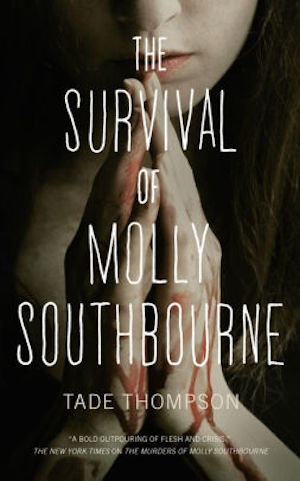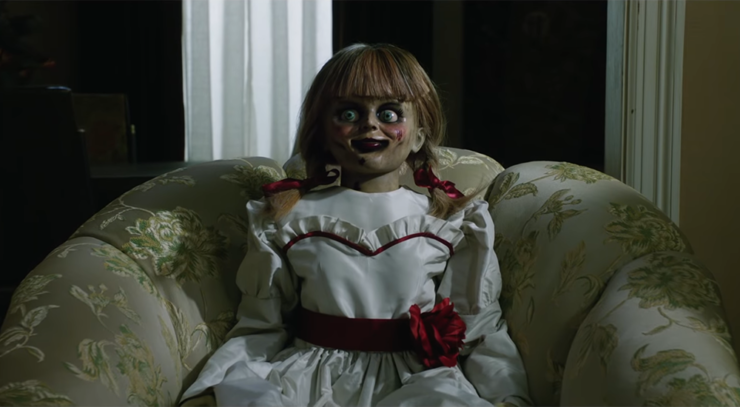Even aside from its massive box office draw, Avengers: Endgame was more than a movie. It was a bonafide social phenomenon, with people from all walks of life coming together to share in the stories of their favorite characters.
To a certain extent, this anticipation makes sense. Superheroes have been crowdpleasers for nearly a century now, and Captain America, Iron Man, and other heroes in the Marvel Cinematic Universe have been building a following almost as long. Furthermore, Endgame and its predecessors enjoy both consistently competent (if sometimes unremarkable) filmmaking and the full marketing machine of Disney, one of the world’s most powerful corporations.
But as demonstrated by the failure of Universal’s Dark Universe and Warner Bros. so-called DCEU, no one does shared universes like Marvel. Well, Marvel and The Conjuring. Sprung from the 2013 meat-and-potatoes horror film directed by James Wan, The Conjuring Universe has blossomed into an interconnected story across seven films and counting, pitting Catholic heroes against demonic forces.
With the most recent entry Annabelle Comes Home pulling together each of those parts, we might have something like the Endgame phenomenon in a darker, scarier hue.
The Conjuring began the universe with the story of Roger and Carolyn Perron (Ron Livingston and Lili Taylor), parents of five girls who move into a New England farm house in 1971. When unexplained phenomena kills the family dog and threatens the lives of the children, the Perrons call upon real-life paranormal researchers Ed and Lorraine Warren (Patrick Wilson and Vera Farmiga), who trace the hauntings to 19th century witch Bathsheba (Joseph Bishara), returning to possess Carolyn. Eventually, the Warrens help the Perrons defeat Bathsheba, and return to their home with a cursed music box, a new trophy to add to their collection.
The Warrens’s trophy room, filled with cursed and enchanted items from their various adventures, certainly hints at further related stories, but it feels more like sly exposition than it does the inauguration of a cinematic universe. Even the film’s opening, in which a pair of nurses describe their fight against the demonic doll Annabelle, seems more like a Chekov’s gun than it does the introduction of a new movie franchise. The Annabelle story establishes Ed and Lorraine as credible demonologists and gives the film personal stakes when Bathsheba uses the doll to attack their daughter Judy (Sterlin Jerins).
Although it opened to lukewarm reviews, 2015’s prequel film Annabelle earned $257 on 6.5 million budget, proving that the killer doll was a villain capable of carrying her own film. Directed by John R. Leonetti, Annabelle reveals the doll’s actions in 1967, before coming to the home of the nurses from The Conjuring. It places Annabelle at the center of a cultist plot to resurrect an evil spirit. In addition to fleshing out the doll’s backstory, Annabelle introduces viewers to Father Perez (Tony Amendola), an associate of the Warrens who returns in 2019’s The Curse of La Llorona.
On the surface, 2016’s The Conjuring 2 feels like a typical sequel, chronicling a new case investigated by the Warrens in 1977. The film follows the plot of its predecessor, with Ed and Lorraine called again to help a family, this time the Hodgsons of London’s Enfield suburb, where a ghost called the Crooked Man (Javier Botet) terrorizes children to scare the family from its property. And like The Conjuring, this entry opens with a seemingly unrelated case, in which Lorraine has visions of an evil nun while investigating the Amityville house. But more than a side antagonist, the nun is revealed to be another form of the demon Valek, who also manifests as the Crooked Man.
Over the course of the next films, Annabelle: Creation and The Nun, Valek becomes the primary villain of The Conjuring Universe. Set in 1943 and directed by David F. Sandberg, 2017’s Annabelle: Creation dramatizes Annabelle’s origin as doll created by toymaker Samuel Mullins (Anthony LaPaglia), who grieves the loss of his daughter “Bee” aka Annabelle (Samara Lee). Although the film initially suggests that Mullins’s daughter haunts the doll while terrorizing young Janice (Talitha Bateman) and her orphaned friends, it later reveals Valek’s demonic power at work when the possessed Esther grows up to be the cultist at the center of the first Annabelle film.
Valek takes center stage in 2018’s The Nun, directed by Corin Hardy. After Valek, in its nun form, destroys the inhabitants of a convent in 1952 Romania, the Vatican dispatches Father Burke (Demián Bichir) and Lorraine Warren’s younger sister Irene (Vera’s younger sister Taissa Farmiga) to investigate. The duo resist Valek’s attacks, but also set it on a path of revenge that leads to Lorraine, both in the form of Irene’s friend Frenchie (Jonas Bloquet), who Lorraine treats in the first Conjuring film, and the nun who haunts her throughout the second.
All of these plot points build toward Annabelle Comes Home, which once again pits the Valek-controlled doll against Ed and Lorraine. But where their first clash was little more than a sidebar to a different conflict, Annabelle Comes Home feels like a battle as epic as the Avengers fight with Thanos.
In fact, there are a number of parallels between the superhero and horror franchises. Thanos first appeared as a silent menace in the post-credit stinger of the first Avengers film, and then slowly developed into a universe-conquering threat. Likewise, Annabelle has transformed from a creepy doll into one of many forms of the powerful demon Valek. While each of the previous films have been satisfying stories of their own, they all feel like a lead-up to this battle.
Buy the Book


The Survival of Molly Southborne
This coherence stems in part from a single guiding hand behind the various films. Where the MCU has producer Kevin Feigie at the helm, The Conjuring films have influential original director James Wan and writer Gary Dauberman, who not only wrote many of the previous entries, but also directs Annabelle Comes Home. Dauberman crafted the various films into chapters of a larger story, building toward an all-encompassing conclusion.
But while such a build-up is certainly impressive, it’s all for nothing unless people care about the characters, and The Conjuring films have done a fine job developing clear heroes and villains. While the real Warrens generated some significant controversy, their filmic counter-parts have all the makings of good movie heroes. Veteran character actors Wilson and Farmiga know how to ground sometimes outrageous actions in believable emotions, and find ways to flesh out the Warrens with grace notes, such as the Elvis singalong Ed leads in The Conjuring 2 or Lorraine’s quiet faith in The Conjuring. The movies give them real stakes and a methodology, particularly as they deal with Lorraine’s visions of Ed’s death. They even have a type of superpowers, as their prayers and Christian icons operate more like Doctor Strange’s talismans than they do parts of a church service.
All of these elements make for a cinematic experience not unlike those offered by Avengers: Infinity War and Endgame, with one key difference: these are horror movies, designed to scare, not to excite you.
Of course, that’s not a bad thing. And as recent box office receipts to just Jordan Peele’s movies demonstrate, the general public has a hunger for horror. But with its under-appreciated history and predilection for reboots, remakes, and sequels, horror has a high barrier to entry. More than a few would-be fans have been mocked for jumping onto, say, The Texas Chainsaw Massacre with the 2003 remake instead of the 1974 Tobe Hooper original. Too many insecure horror fans play gatekeeper, insisting that newcomers profess allegiance to the “right” horror movies before joining the larger fandom.
With its now-familiar shared universe structure, Annabelle Comes Home has the opportunity to circumvent such exclusion. It offers a way for new horror fans to not only buy into a larger cinematic world, following a storytelling language they learned in the Marvel movies, but also to establish their own expertise, teasing out the various plot threads strong along the preceding six movies.
Annabelle Comes Home likely won’t have quite the financial or cultural impact of Endgame, but it can be the first step for new horror fans and can open old horror fans to new ways of telling scary stories in their favorite genre.
Joe George‘s writing has appeared at Think Christian, FilmInquiry, and is collected at joewriteswords.com. He hosts the web series Renewed Mind Movie Talk and tweets nonsense from @jageorgeii.










